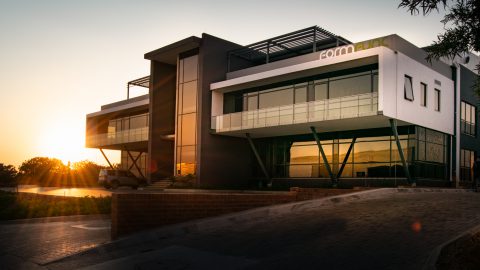Sunday Times Malls SA
How Green Are Our Malls?
Globally the United Nations Environment Programme Sustainable Buildings and Climate Initiative attributes 30% of annual carbon emissions to the building sector. So reforming practices in this area can clearly help reduce a country’s carbon footprint.
Industrial and economic development should never occur at the expense of the environment or with little concern for that development’s social impact on vulnerable communities. Nationally this is evident through government’s R800-million investment in a Green Fund that supports initiatives that help the country transition to a low-carbon, resource-efficient and climate-resilient development path.
Implementing green technology and innovations
Developers in the commercial real estate industry have begun factoring in the impact of construction on the environment. Research by the Deloitte Center for Financial Services shows an increase in the demand for the implementation of green technologies to generate alternative energy and save resources. Furthermore, green buildings have become big business worldwide, and a hot topic in terms of the development of new malls.
Ross Matthews of Green Power Energy Solutions believes we should optimise our limited energy resources in a way that both secures future economic growth and is environmentally sustainable.
Referring to the development of alternative energy technologies, he says, “The first step in any process of looking at reducing exposure to Eskom is probably to understand your energy profile, and then once you understand that, look at reducing the energy intensity of the business. Then finally, look at ways to generate energy (or alternative energy sources).”
This approach allows property owners to benchmark energy use intensity (EUI) so that best practice can be developed and spread across their property portfolios.
At Green Power, when advising clients on how to reduce their EUI, they start by assessing the client’s energy profile – that is, when and where energy is being used. Then they focus on upgrading systems by offering the client the most energy-efficient alternatives. For instance, most of the energy consumed within an indoor shopping centre is by cooling and lighting equipment.
Some older lighting systems aren’t energy-efficient, and light levels are often inadequate and inconsistent. Light-emitting diode or LED lighting not only reduces the energy consumed by lighting by 60% to 80%, but also improves the look and feel of interior spaces, and security in outdoor and underground parking areas. If shoppers feel more comfortable in a space, foot traffic increases, and shops make more money.
Green technology in action – Mall of Africa
Mall of Africa in Waterfall City, Gauteng, is southern Africa’s largest single-phase shopping centre, and an excellent example of the implementation of “green” technology in retail infrastructure. A R5-billion project co-owned by Attacq Limited and Atterbury Group, Mall of Africa is home to over 300 retail outlets, restaurants and entertainment facilities.
From a design and engineering perspective, there are a number of green strategies that have been implemented. These include large photovoltaic panels on the roof that can provide 4.8 MVA of sustainable power, a grey-water harvesting system which is used for the mall’s toilets, and irrigation. The project was also designed to maximise natural light exposure.
An environmentally focused project on the scale of Mall of Africa is unprecedented in South Africa. However “greening” malls has become a priority throughout the country.
Menlyn Park Shopping Centre in Tshwane recently became the first mall in South Africa to achieve a four-star Green Star Retail Design Rating from the Green Building Council of South Africa (GBCSA). Other notable examples of green initiatives include the Epsom Downs Shopping Centre in Bryanston, which has a solar farm installed on its roof, and energy-efficient light retrofitting programmes that have been used at Durbanville’s De Ville Shopping Centre and the Cape Quarter in Green Point, Cape Town.
GBCSA reports show that there has been a progressive uptake of green building principles throughout the retail sector in South Africa. The motivation for adopting green practices, as acknowledged by policymakers, is driven by increasing concerns for the environment – particularly the impact that population growth, urbanisation and construction are having on global warming.
Besides this, the World Green Business Council reports that implementing green strategies is good for business. Although the initial costs incurred in research and development of green technology are high, the long-term savings and benefits following the implementation of these are substantial for the retail sector, and for society as a whole.






 Sign-up and receive the Business Media MAGS newsletter OR SA Mining newsletter straight to your inbox.
Sign-up and receive the Business Media MAGS newsletter OR SA Mining newsletter straight to your inbox.